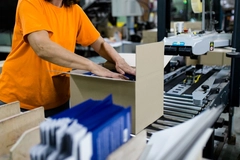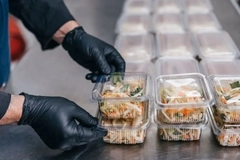Bread packaging innovation: How suppliers are slashing material and extending shelf life

17 Apr 2024 --- According to Innova Market Insights, bakery product launches rose 1% from 2019-2023, during which time Europe was the leading region for innovation, accounting for 35% of new launches. Plastic remains the most commonly used material in the segment, and recyclability is the most common sustainability claim.
Bread was consumed by 80% of global consumers in the past year, according to the market researcher. The so-called “bread line” is the level of income at which people are considered to be in poverty — this signifies the importance of bakery products as a food staple in global markets.
After Russia invaded Ukraine — often called the “breadbasket” of the world — millions of people were pushed into poverty as grain supplies through the Black Sea were disrupted.
So how are packagers helping alleviate pressures on one of the world’s most important food staples, which is usually vulnerable to a relatively short shelf life? We speak to Marcel Veenstra, marketing and communications manager at Sealpac about efforts at improving environmental and supply chain sustainability for bakery products.
Minimizing plastic usage
With consumer sentiment against plastics on the rise and a myriad of legislations stemming the associated production and waste, many companies are looking for alternative materials to package bakery items.
“In general, we try to assist our bakery customers in creating packaging with minimum plastic content,” says Veenstra. “Even though most bake-off products are already packaged in relatively thin, flexible film, we still try to reduce the thickness of this film by offering the Rapid Air Forming (RAF) system on our thermoformers.”
 Sealpac’s DomePac solution.The RAF system achieves an improved forming consistency, particularly in the corners of the pack, without requiring an additional stamp mechanism, he explains.
Sealpac’s DomePac solution.The RAF system achieves an improved forming consistency, particularly in the corners of the pack, without requiring an additional stamp mechanism, he explains.
“As a result, up to 10% thinner films can be used. Furthermore, we cooperate with material suppliers to create more sustainable solutions, for example, by testing with monomaterial films that improve recyclability, as well as with biodegradable materials, as we showed at the recent Anuga FoodTec exhibition in Cologne.”
MAP technology
Manufacturers of bakery products are “strongly looking” for shelf life extension by applying modified atmosphere packaging (MAP), according to Veenstra.
“For example, in the growing segment of bake-off rolls. By exchanging the normal air inside the package with a suitable gas mixture, shelf lives of at least 30 days can be achieved,” he explains.
“In the case of gluten-free bakery products, another booming segment, MAP prevents those products from drying out. One always has to look at the total footprint, including the product itself.”
Needed plastics?
Sentiment against plastics is often unjustified, according to Veenstra, since the proportion of GHG emissions is usually heavily placed with the product rather than packaging.
Often, in the case of a bakery, it could be that the product makes up 70% of the environmental footprint, transport accounts for 25% and the packaging for just 5%, he explains.
“In that case, protecting the food with some amount of plastic is still the better option. Recent improvements are mainly on the materials side, where the focus is on maintaining enough barrier properties to allow for MAP, even when using thinner plastic or alternative, easier-to-recycle materials.”
Innova Market Insights pegged “Maximizing Minimization” as a top trend for 2024, noting that a 41% average annual growth globally in F&B launches with packaging has reduced packaging claims from 2019–2023 (CAGR). Bread in Rapid Air Forming packaging.
Bread in Rapid Air Forming packaging.
Consumers are responding — according to Innova’s survey, almost a third (29%) of global consumers say reduced material use in packaging positively influences their product choices.
What distinguishes bakery packaging?
When approaching bakery products, Veenstra says Sealpac sees little difference with packaging other F&B items.
“In each food segment, mainly driven by retailers, there is a demand for packaging with as little plastic as possible. And in each food segment, there is a growing awareness to save food,” he says.
“For luxury products, there is still a demand for high-class packaging systems, such as our DomePac solution. Here, a transparent dome is sealed directly onto the tray. As an option, this can be done under a modified atmosphere.”
Veenstra says the trend against plastics is “unfortunate” because the pros often outweigh the cons when selecting packaging materials.
“When it comes to plastic waste ending up in nature, for example, in the seawater, this [attitude] is understandable. But one must never forget the benefits of protecting a fresh product and prolonging its shelf life to avoid food waste.”
“This is a balance that legislation needs to address and that retailers need to communicate. In addition, policymakers can assist by rewarding food manufacturers and retailers that launch initiatives resulting in more sustainability and increased recycling or punishing the ones that don’t. But consumers also play an important role, as in the end they determine what actually gets recycled.”
By Louis Gore-Langton











